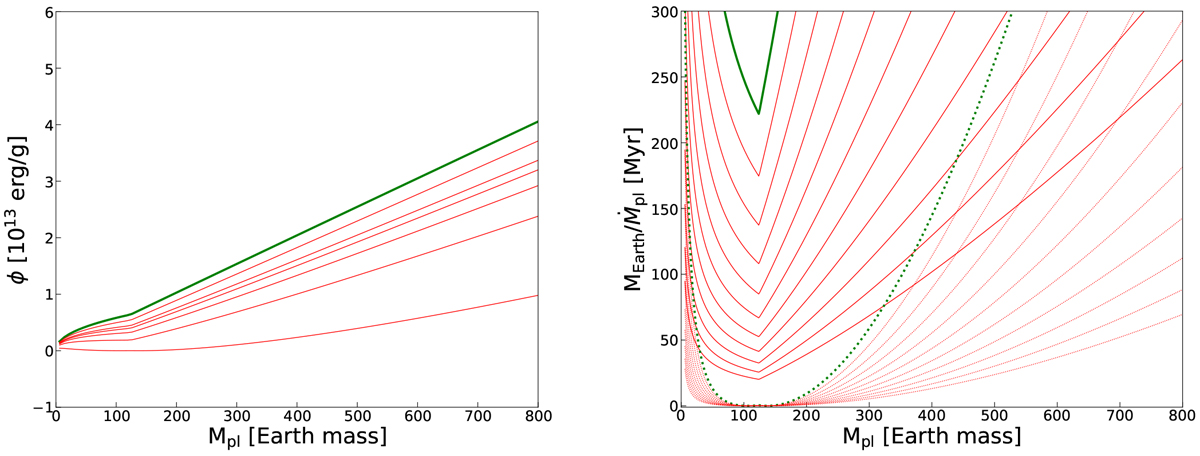Fig. B.2

Left panel: variation of the energy needed to bring a unit-mass planetary material up to the Roche lobe as a function of the mass of the planet and of the orbital distance. The green line corresponds to the case when the planet is in isolation, showing the energy needed to bring a unit mass to infinity. The red lines corresponds to cases where the planet is sufficiently near the star so that the energy would be lesser than the former case, which is needed for bringing a unit mass only up to the Roche lobe between the planet and the star. From top to bottom, red lines correspond to orbital distances equal to 0.1, 0.05, 0.04, 0.03, 0.02, and 0.01 au. Right panel: variation of the initial evaporation timescale of planets of different masses irradiated by different XUV fluxes. The green line corresponds to a flux equal to 104.5 erg s−1. The lowest red curve corresponds to a flux equal to 105.5 erg s−1. The lines in between correspond to intermediate values, from 104.6 to 105.4 in steps of 0.1 dex. The distance between the planet and the star has been assumed to be 0.1 au for the continuous lines and 0.01 au for the dashed lines.
Current usage metrics show cumulative count of Article Views (full-text article views including HTML views, PDF and ePub downloads, according to the available data) and Abstracts Views on Vision4Press platform.
Data correspond to usage on the plateform after 2015. The current usage metrics is available 48-96 hours after online publication and is updated daily on week days.
Initial download of the metrics may take a while.


